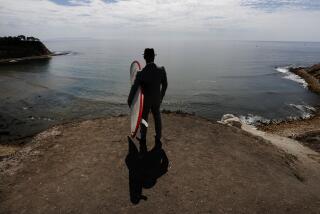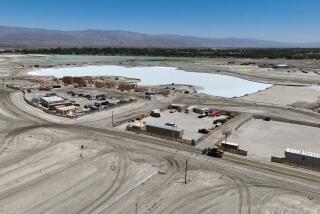City Seeks Proposals to Restore LAX Dunes : Ecology: Plans include clearing 200 acres to remove non-native plant species and developing a self-sustaining ecosystem.
- Share via
Almost 30 years ago, when Los Angeles’ airport entered the jet age and the roar of aircraft pummeled nearby neighborhoods, a vast swath of sand dunes west of the airfield was cleared of about 800 homes.
After the bulldozers had left and the 300 acres near El Segundo were free of development, the city fenced in the dunes and got on with the business of running LAX.
But as the years passed, preservationists warned that rare animals and plants in the dunes had been dislocated by the demolition work and were imperiled by new development nearby, such as grading for airport facilities. Their warnings spawned plans to restore the dunes, one of the last remnants of a coastal dune system that once spanned 2,900 acres in Southern California.
Last week, as that effort continued, the Los Angeles City Council took another step toward preserving the dunes, agreeing to seek formal proposals for restoring 200 acres of the land to its native state. The remaining 100 acres will be set aside for an 18-hole golf course proposed by the city’s Department of Airports.
The council action was not a milestone in the project’s history. Officials with the city’s Department of Environmental Affairs said the plan faces many hurdles--among them, a final vote in November by the California Transportation Commission on releasing a $430,000 state grant earmarked for the project.
Nevertheless, the move represents another step in the long-debated efforts to preserve the dunes and more than 900 plant and animal species that inhabit them--about a dozen of which, including the El Segundo blue butterfly, are endangered.
Melinda Bartlett, director of the city environmental agency’s water and natural resources division, said Friday that the city recently contacted about 300 environmental firms, universities and agricultural companies to determine their interest in the dunes restoration project. About 20 of those schools and firms have expressed interest, Bartlett said, adding that more participants are expected.
The thrust of the project, according to city officials, will be to clear the 200 acres of invasive, non-native plants so the land can be reseeded and irrigated over a two-year period. The goal, they said, is to develop an ecosystem that will be self-sustaining, in drought and other conditions, for at least 50 years.
The city’s preliminary outline of the project calls for planting 52,000 plants and shrubs in the dunes in the first year. Officials also hope to reintroduce several wildlife species to the area, including the California quail and small mammals that are seen as key to the ecosystem. In the second year, preliminary plans call for introducing another 50,600 plants and returning other threatened species, including half a dozen of the 30 species of butterflies that have vanished from the dunes.
“The goal is to restore the dunes so it can pretty much run itself,” Bartlett said. “And we need biologists and others to help us determine how to do that.”
Pending final action on the state grant, Bartlett said, the city will not select a company or education institution to begin work. But she said it will continue to solicit information from interested parties so a contract can be awarded quickly if state funds are released.
“We are moving right along,” she said, adding that officials hope the restoration work can begin as early as December.
El Segundo Dunes
The Los Angeles City Council has agreed to seek formal proposals for restoring 200 acres of sand dunes--located west of Los Angeles International Airport--to their native state. The remaining 100 acres will be set aside for an 18-hole golf course.
More to Read
Sign up for Essential California
The most important California stories and recommendations in your inbox every morning.
You may occasionally receive promotional content from the Los Angeles Times.










